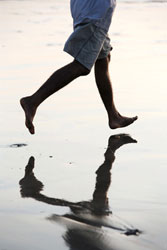Physical training programme for understanding frailty
Motor system condition becomes frailer as people get older, making mobility, balance and endurance limited. Frailty is associated with falls, inability to perform certain daily activities and a loss of independence. Therefore, it is imperative to know more about this phenomenon in order to lessen its impact so the elderly can lead safer and more socially inclusive lives. In light of this, the BETTER-AGEING project has researched causes of, and remedies for physical frailty. One of the ways in which it has done this is by evaluating the effects and benefits of a twelve-month physical training programme. Fifty-eight older people and thirty-one young adults were selected for comparisons. One of the major findings was that sarcopenia (loss of muscle mass) is related to a decrease in fibre fascicle length as well as stiffness in the lower tendons of older people. Also, neural drive to the muscle was not like that of young adults because muscle voluntary activation was reduced in the older individuals. It is changes like these which make up approximately 50% of the loss in peak muscle power and 70% of the loss in isometric strength. This shows deterioration in muscle quality in old age. Overall, the findings show that muscle weakness in old age is not only caused by a loss of muscle mass but also by changes in the internal architecture of skeletal muscle. This is intensified by a decline in tendon stiffness as well as alterations in neural drive. It is important to note, however that physical activity such as aerobic, concentric/eccentric strength and proprioceptive exercises is effective in reversing or lessening such age-related changes. If performed at least twice a week, these exercises can help improve muscle quantity, quality and functional performance. Thus they can be recommended for future training programmes designed for older individuals.

